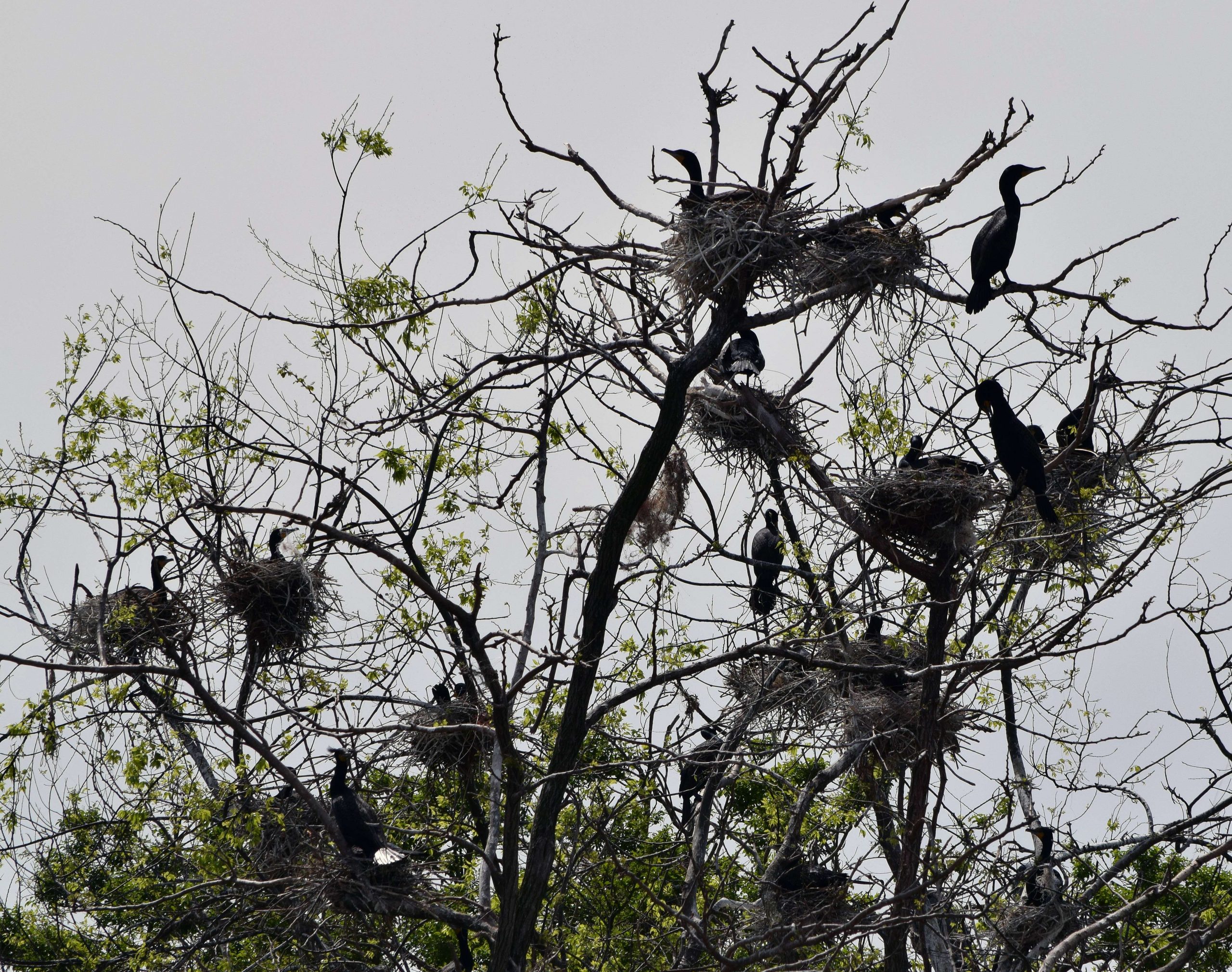
WASHINGTON, D.C. – Following a one-year prohibition as a result of a court order, harmful cormorant populations are once again being culled.
“We’re trying to balance maintaining a stable cormorant population with managing them in the place where they’re causing damage,” explained Tom Cooper, a region chief of the Migratory Bird Program for the U.S. Fish and Wildlife Service (FWS).
The news comes as welcome relief to state resource managers, especially in regard to hatcheries and habitat.
“In 2017, uncontrolled cormorant populations feasted on Ohio’s state fish hatcheries,” said Kevin Kayle, hatcheries program administrator for the Ohio Department of Natural Resources. “They ate well over a quarter million fish, valued at almost $200,000.
“Because the cormorants ate small hatchery fish that were part of the production slated for yearling and catchable stockings, the effects will be felt for several years down the line.”
According to new FWS guidelines, “Aquaculture facility managers and property owners across 37 central and eastern states and the District of Columbia will be able to apply for individual permits for lethal take of double-crested cormorants . . . “
That includes permits to kill up to 18,270 of the fish-eating birds in eight Midwest states, including the Great Lakes area, where they have been especially destructive to habitat. They roost and nest in huge numbers, often on islands, stripping plants of leaves for their nests. Their acidic droppings kill trees and other vegetation, eventually leading to shoreline erosion. Additionally, they crowd out other aquatic birds, including herons and egrets.
West Sister Island in western Lake Erie provides but one example of places where cormorants are problematic. Before culling started in 2006, nearly 10,000 pairs congregated there. By 2016, the number had been reduced to 4,000 pairs. Still management is needed to keep the population under control and protect habitat.
“The management of double-crested cormorants on West Sister Island is critical to the habitat sustainability to the nesting birds on the island,” said Jason Lewis, manager of Ottawa National Wildlife Refuge. “The refuge is committed to working with the Ohio Division of Wildlife and USDA (U.S. Department of Agriculture) Wildlife Services to remove cormorants impacting critical colonial waterbird nesting habitats on West Sister and other islands on Lake Erie.”
With depredation permits once again being issued, 2,000 cormorants have been killed at West Sister, as well as 2,157 at Turning Point Island and 503 on Green Island.
FWS first began to allow culling in 2003, as complaints increased regarding the damage done by exploding populations of the birds. In May 2016, a federal judge ruled that the agency had failed to adequately assess impact and the program was shut down.
Today, the agency says that it has assessed a portion of the cormorant issue, which is why permits can be issued. “The EA (environmental assessment) analyzed options for the issuance of depredation permits for cormorants where there is either significant economic damage to aquaculture facilities, significant damage to native vegetation, significant impact on a threatened or endangered species, or significant human safety risks,” FWS said.
But it has yet to review potential damage to recreational and commercial fishing by cormorants.
“Over the next year, the Service will engage stakeholders in order to assess the biological, social and economic significance of wild fish-cormorant interactions, and to identify a suite of management alternatives,” it explained.
According to experts, a cormorant can eat up to a pound of fish a day, or about 1/4 of its body weight. In addition to feasting at hatcheries, studies have revealed that these birds eat mostly forage species, such as shad in reservoirs and alewives in the Great Lakes. Considering that the Great Lakes alone has 40,000 pairs, that’s 80,000 pounds – 40 tons – of fish consumed daily.





